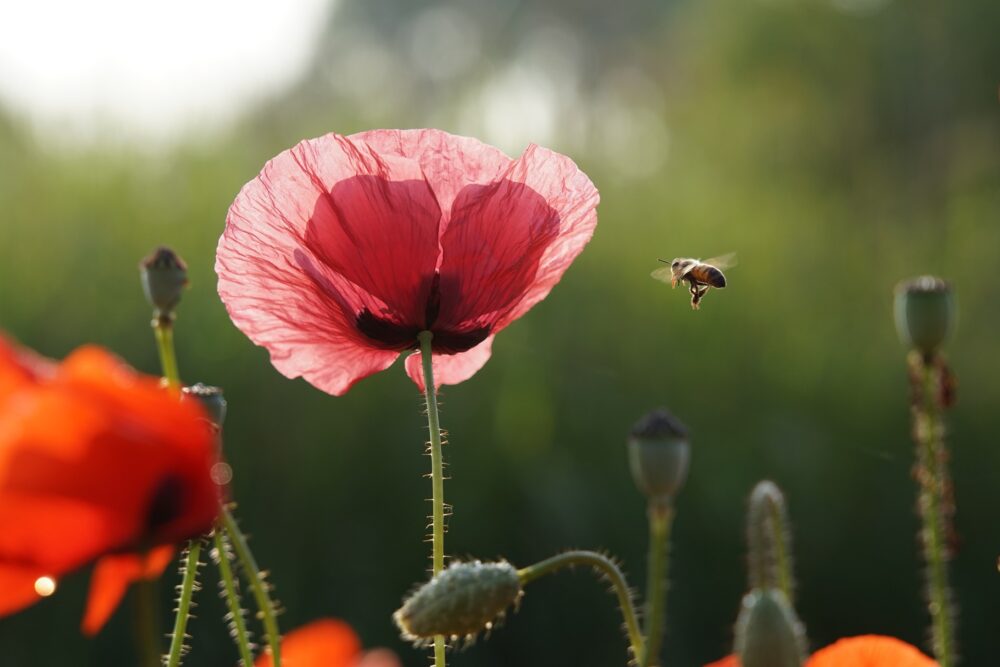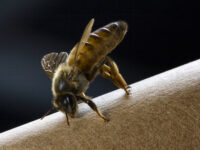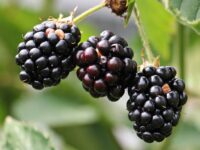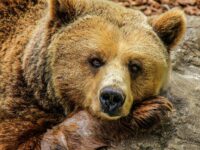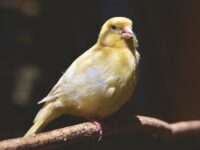It’s hard to go very far these days without hearing about the latest diet craze, or way to control what you eat. Humans naturally crave diets high in protein, fats, and sugars because those nutrients, called macronutrients, are needed in the highest volume for our bodies’ daily functions. Humans aren’t the only ones who rely on those nutrients, and we aren’t the only ones who find ways to regulate our intake of them to stay healthy.
Bumble bees need a minimum of each of these nutrients (as well as the two other macronutrients: water and fiber). The majority of a bee’s carbohydrates comes from plant nectar. Of all the nutrients, bees primarily need carbohydrates because they are foragers. Foraging is a relatively energy-intensive strategy of food collection, so bees consume a large amount of calories and must replace them in the form of sugars.
The other source of nutrients for a bumble bee is pollen, which provides the majority of protein and fat. Each plant species has pollen with different nutritional qualities. Depending on the plant species, the protein content of pollen ranges from 2 to 60 percent, and the amount of fat is between 2 and 20 percent.
Consuming a diet too high or too low in fat, for example, can affect a bee’s immune system, ability to reproduce, and tolerance to environmental stressors.
A bee must regulate the amount of each nutrient it consumes because its diet, just like ours, has an enormous effect on physical health. Consuming a diet too high or too low in fat, for example, can affect a bee’s immune system, ability to reproduce, and tolerance to environmental stressors.
Because of how important maintaining a proper diet is, bees are actually able to self-regulate what they consume in order to stay healthy. Bees are capable of understanding and differentiating the nutritional values of pollen in different plants. They can taste and distinguish high or low fat content and will avoid pollen that is too high in fat. A 2017 study published in the Journal of Experimental Biology found that two species of bumble bee, Bombus terrestris and Bombus impatiens, prefer a diet that has a protein-to-fat ratio of approximately 13-to-1, and will selectively feed from multiple species to achieve that ratio.
Bees are actually able to self-regulate what they consume in order to stay healthy.
It is fairly common knowledge that bees are important pollinators and that they are being threatened. Nearly every fruit and vegetable we eat requires pollination. Pollination allows plants to reproduce and grow fruits or vegetables, and without bees we would have a much harder time pollinating crops. Unfortunately, bee species have been declining in the past decades. In 2017, the first bumble bee species was listed as endangered by the US government after the population declined by 87 percent. Before that, seven other species of bees had been added to the list. They are also becoming locally extinct in areas where they were once abundant.
There are a variety of theories behind declining bee populations. Limited food diversity due to habitat destruction is a factor contributing to the bees’ struggle. Changes in plant habit as a result of climate change are also potentially affecting what is available for bees to eat. If bumble bees and other bees aren’t able to maintain the correct diet because there isn’t enough plant diversity, it could be catastrophic for bee populations and the world.
The impact of bee loss is also dangerous for ecosystem stability. Many food chains rely on insects as the base. If some or all species of bees become extinct, it could have devastating effects on other species of plants and animals in those ecosystems. Given their importance, we need to use what we know about their diets to do everything we can to help bees thrive because when they get the nutrients they need to survive, we get ours too.
Journal of Experimental Biology (2016). DOI: 10.1242/jeb.140772
